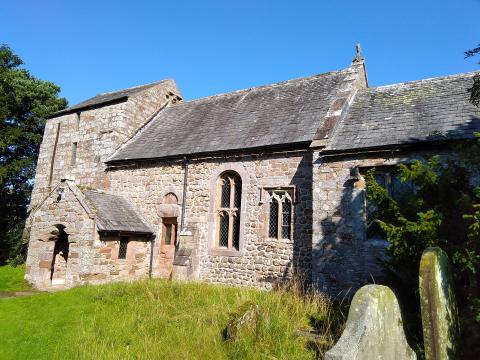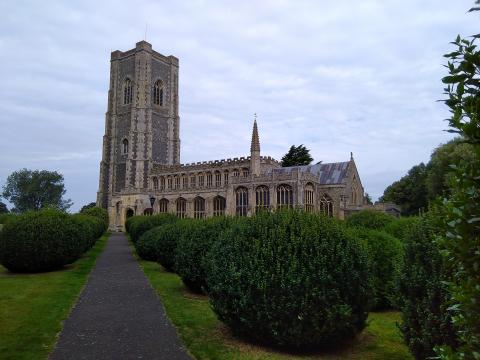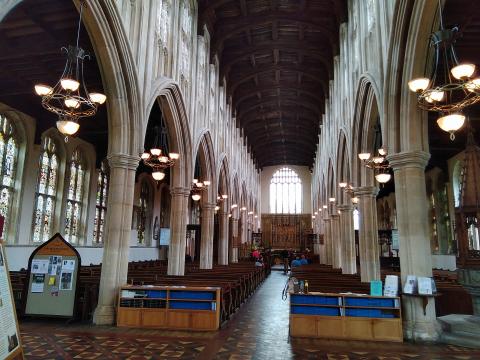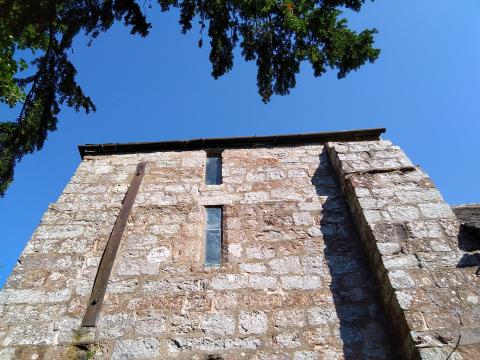Ormside or Melford, West or East

Many churches were built to resemble castles- solid towers with crenelated parapets. From their battlements watchmen and soldiers could peer down on the surrounding country. Yet I found a church in Cumbria last week which, though bereft of any crenelation (battlements), looked more like a fortress than ever I have seen. St James, at Great Ormside near Appleby-in-Westmorland, is as tough a church as you’ll find. Dating back a thousand years, its windows are often small, its walls thick, its decoration minimal.

Contrast this to some of those lofty steeple-houses I encountered in Suffolk last month. Although bearing stylised battlements and substantial bell towers, these could not be defended from any attacker. Above is Lavenham, with its long nave and intricate masonry.

This is Long Melford with its large, stately windows and soaring perpendicular arches. Why are churches down there so light, airy and spacious, while the north’s typical churches are rather heavy, sullen and defensible?
St James’, Great Ormside, was built in hard times, with troublesome Danes, bothersome Scots or feisty locals in mind. It was clearly somewhere that could be locked down to weather attacks while help was summoned. Being close to the Irish sea and the Scots border would have made the area vulnerable to attack. The Suffolk coast would have been reckoned more civilised; there the church builders allowed their artistic licence to flourish and thrive, whereas the northern church builders would waste neither time nor money on imaginative luxuries which the next raiding party would obliterate.
Secondly the money. Whereas Cumbria is also known for its sheep farming, the Suffolk towns were among the wealthiest in Europe for their woollen exports. The rich merchants extended and rebuilt their churches as their coffers filled and overflowed. The north was, and still is, a poorer place, unable to update its buildings with the latest fashions and flurries.
These two pictures remind me of the two Churches in the world today- the Western Church and the Third World church. The former has much money, it lavishes its worship with expensive audio tech, its members enjoy gadding to conferences and paying for ministry to make them feel better about themselves. The latter is besieged by enemies, always on the lookout for further attacks and aggression. Their governments close them down, harass their pastors, instruct police to turn blind eyes to hostility. Their worship is plain, lacking the West’s obsession with technology and comfort.
Architecture does not guarantee faithfulness, and comfortable seating and projected words do not prove compromise. Yet the Lord Jesus addresses both churches here:
Because you say, ‘I am rich, have become wealthy, and have need of nothing’—and do not know that you are wretched, miserable, poor, blind, and naked (Rev 3:17);
and
“I know your works, tribulation, and poverty (but you are rich)” (Rev 2:9)

- Log in to post comments


 Sunday Worship 10.45am & 6.00pm
Sunday Worship 10.45am & 6.00pm